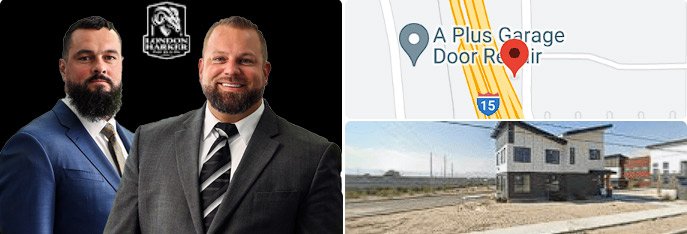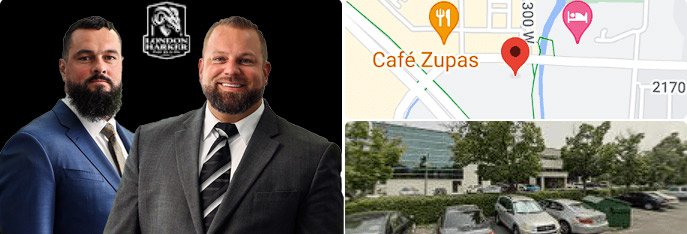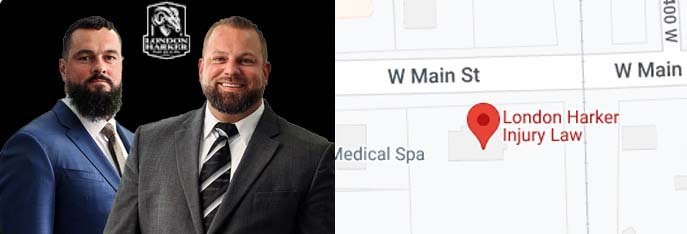Posted on Saturday, September 20th, 2025 at 12:16 am
When you’re injured because of someone else’s negligence, the immediate costs like ER visits, surgery, and lost wages are usually clear. But many serious injuries come with lasting consequences—ongoing medical needs, permanent disabilities, and reduced earning ability. These are known as long-term damages, and proving them is essential if you want fair compensation.
In Utah, demonstrating long-term damages requires detailed evidence, expert testimony, and a legal strategy tailored to state law. This guide breaks down the key categories of long-term damages, the evidence required, and how Utah law affects your claim.
For help with your personal injury case, visit LondonHarker.com/personal-injury-claims.
What Are Long-Term Damages?
Long-term damages (also called future damages) cover losses that extend beyond the settlement date or trial verdict. They go beyond the bills you’ve already received and focus on what your life will look like in the months and years ahead.
The three primary categories of long-term damages are:
Future medical expenses
Loss of future income and earning capacity
Future pain and suffering
1. Proving Future Medical Expenses
If your injury requires ongoing or future treatment, you may be entitled to compensation for:
Future surgeries, therapy, or rehabilitation
Prescription medications
Assistive devices (braces, wheelchairs, prosthetics)
Long-term nursing or home health care
Home or vehicle modifications
Evidence Needed
- Medical expert testimony: Doctors must confirm your need for ongoing care “within a reasonable degree of medical certainty.”
Life care plan: A specialized expert outlines your lifetime treatment needs.
Economic experts: Economists calculate projected costs and medical inflation.
Medical records & prognosis: Documentation of your condition and likely recovery path.
If you accept a settlement without accurately accounting for these future costs, you typically cannot reopen the case later.
2. Proving Loss of Future Income and Earning Capacity
Injuries can permanently affect your ability to work or earn at the same level. Utah law allows recovery for both:
Lost future income: Pay you miss because you can’t return to work.
Loss of earning capacity: Reduced ability to advance in your career or work the same hours.
Evidence Needed
- Medical restrictions: Doctor’s notes confirming work limitations.
Financial records: Tax returns, pay stubs, or business invoices to show pre-injury earnings.
Vocational experts: Professionals who evaluate your job skills and employability after the injury.
Economic experts: Project lifetime lost wages based on your profession and industry trends.
Employer testimony: Verification of lost promotions, benefits, or work opportunities.
For more detail, see our guide on claiming lost wages after a car accident.
3. Proving Future Pain and Suffering
Pain and suffering includes both physical discomfort and emotional harm such as:
Chronic pain
PTSD, anxiety, or depression
Permanent disability or disfigurement
Loss of enjoyment of life
Evidence Needed
- Medical and therapy records
Mental health expert testimony
Personal journals documenting your daily struggles
Witness statements from family, friends, or coworkers
Calculating Pain & Suffering in Utah
Utah courts typically use:
Multiplier method: Multiply your economic damages by a number (usually 1.5–4).
Per diem method: Assign a daily rate for your suffering until recovery or maximum medical improvement.
Utah-Specific Legal Factors
When proving long-term damages in Utah, you must also consider:
Comparative Fault: Under Utah law, if you’re 50% or more at fault, you cannot recover damages. If you’re less than 50% at fault, your award is reduced proportionally.
Statute of Limitations: For most injury claims, you generally have 4 years to file a personal injury lawsuit.
Car Accident Claims & PIP Coverage: Utah is a no-fault state, meaning your own Personal Injury Protection (PIP) covers medical costs and some lost wages initially. Once PIP limits are exceeded, you may pursue damages against the at-fault driver.
Steps to Strengthen Your Claim
Follow medical advice and keep consistent treatment records.
Avoid social media posts that could be used against you.
Keep a detailed journal of your symptoms and limitations.
Work with experienced attorneys who know how to prove long-term damages in Utah courts.
Get Legal Help Proving Long-Term Damages
Proving future damages isn’t simple—it takes medical experts, financial projections, and legal skill. Insurance companies will do everything they can to downplay your future needs.
If you’ve suffered serious injuries and are facing long-term consequences, contact a Utah personal injury lawyer today.
Schedule your free case review at LondonHarker.com/contact-us



